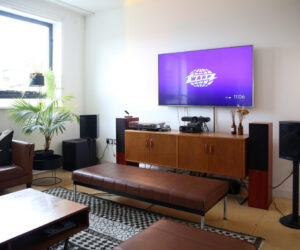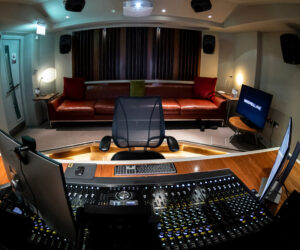The decision to purchase a pair of ADAM Audio S3 three-way active monitors for Uptown Recording’s Studio East was initially a leap of faith, according to Rob Ruccia, the facility’s chief engineer.
Since then, the near/midfield monitors have more than lived up to expectations, offering such realism, transient response, transparency and translation to any other playback system that Ruccia also bought a pair of ADAM Audio F7 speakers for his home studio.
Ruccia reports that he was initially drawn to ADAM Audio monitors because of the company’s ART— Accelerating Ribbon Technology—tweeter technology.
“I’m an audiophile by nature but I also went to school for acoustic science and I understood what the ribbon tweeter would do for me,” explains Ruccia, who purchased the S3’s through GC Pro in Chicago before even hearing a pair. But it was an informed decision.
“I used to work in retail selling speakers at a music store here in Chicago, so I’ve gone to trade shows, and listened to pretty much every brand. I’ve never seen anyone else doing ribbon tweeters the way ADAM does.”
He continues, “The ribbon tweeter completely did what I thought it would. The ribbon gives me the high frequencies faster. It allows me to work on marathon mixing sessions without fatigue. It doesn’t make me want to put tissue over it, or produce what I call the problematic ‘paper dome syndrome,’ where over time you get tired of listening to them.”
The ability to work long sessions without ear fatigue has been a godsend when working with longtime client Robert Irving III, who was musical director and keyboard player for jazz legend Miles Davis for 20 years.
“Doing projects with him have definitely pushed the length of sessions. He likes to go long and hard, so if I didn’t have speakers that let me do that I would be deaf by now,” he says.
One of Irving’s projects, for Miles from India, a compilation of Miles’ music featuring Indian musicians and a slew of Davis alumni, was nominated for a Grammy Award in the Best Contemporary Jazz Album category, was tracked here with the ADAM monitors, Ruccia reports.
Both Studio East and Studio West at Uptown Recording feature Avid Pro Tools|HDX rigs and Steven Slate Raven MTX Mk II controllers housed in custom consoles built by Sound Construction in Nashville. The consoles and outboard Argosy Console equipment racks house impressive collections of outboard analog processing.
Studio East also features a classic MCI JH16 two-inch tape machine. “I wanted to have as much of an analog and classic sound as possible, and the ADAMs definitely top that off,” says Ruccia. The facility has pursued a hybrid workflow ever since opening at its current location 15 years ago, he says.
Located in Chicago’s storied Uptown district, which features entertainment venues such as the Aragon Ballroom and Riviera Theatre, the studio focuses on music production but also handles film scoring and post projects.
“We get a lot of jazz here, because we’re located right down the street from the Green Mill, the oldest jazz club in the country,” he says. “The ADAMs are amazing on jazz; they have such nice, fast response. While I end up tracking mostly in Studio West, because the piano is in there, I always take it to East to mix. I need my S3’s.”
Transparency is important, he continues. “The ADAMs translate really well into my car and into other rooms.” For that reason, Ruccia, an artist formerly signed to Arista Records, also has a pair of F7s at home. “I wanted to have the transparency of the same ART ribbon technology. I didn’t want to have false high end when I got home. Or to take sessions from home and bring them to the studio and hear how harsh they are, and how much extra high end I had to dial up, because my ears got tired and I added more treble. I’m not surprised when I go back and forth between home and the studio. The A7s sound amazing. They’re great speakers.”
There can be a learning curve for clients and freelancers using ADAM monitors for the first time, he comments. “Their first mixes out of here might be a little bit dull, because they dial down the high frequencies. But it’s just about learning, and understanding that what you are hearing is real. When people leave, they say, ‘Too bad we can’t take these ADAM speakers with us, because it never sounds as good as it does through these.’”




















